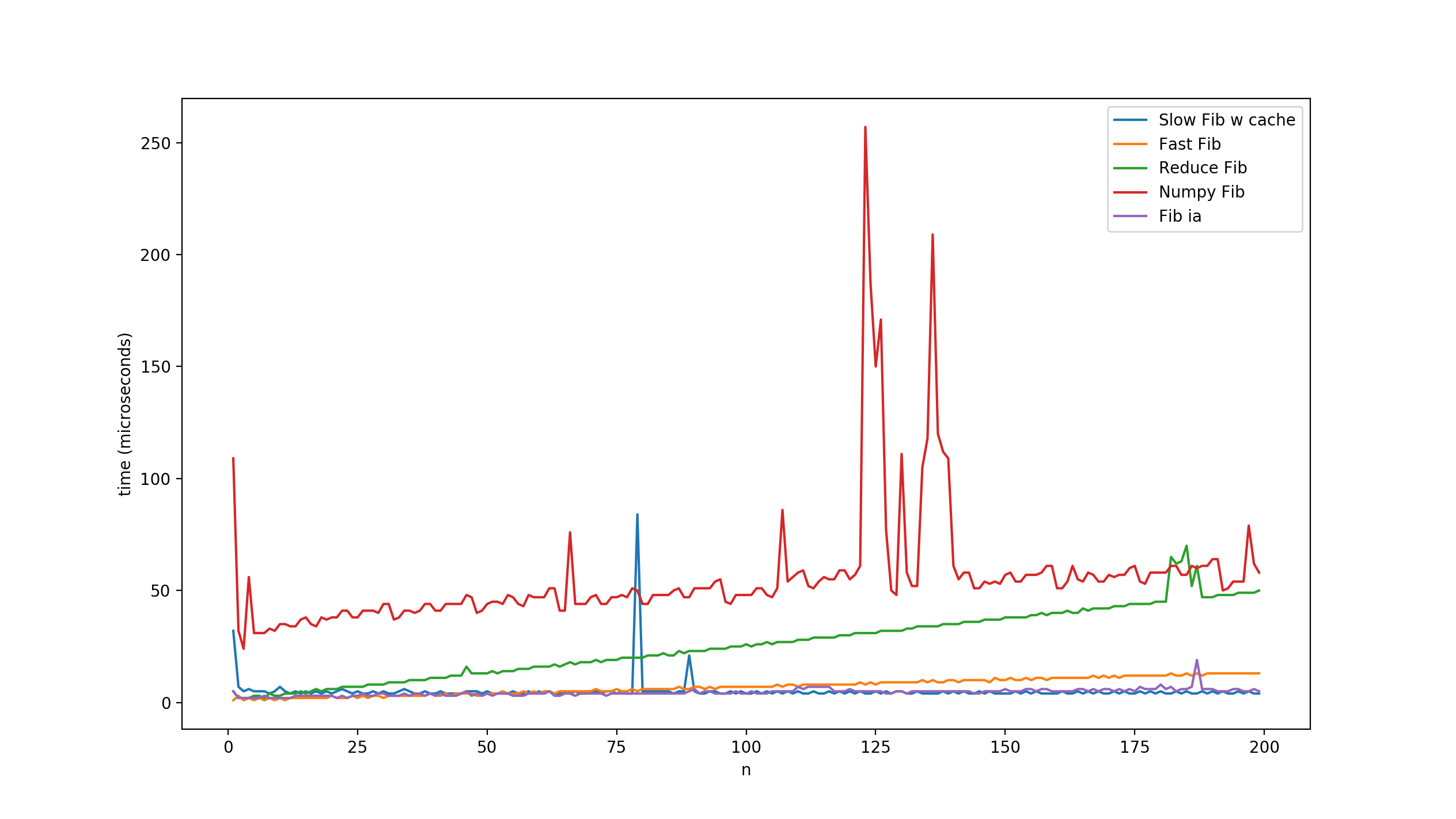Here's an implementation that doesn't use recursion, and only memoizes the last two values instead of the whole sequence history.
nthfib() below is the direct solution to the original problem (as long as imports are allowed)
It's less elegant than using the Reduce methods above, but, although slightly different that what was asked for, it gains the ability to to be used more efficiently as an infinite generator if one needs to output the sequence up to the nth number as well (re-writing slightly as fibgen() below).
from itertools import imap, islice, repeat
nthfib = lambda n: next(islice((lambda x=[0, 1]: imap((lambda x: (lambda setx=x.__setitem__, x0_temp=x[0]: (x[1], setx(0, x[1]), setx(1, x0_temp+x[1]))[0])()), repeat(x)))(), n-1, None))
>>> nthfib(1000)
43466557686937456435688527675040625802564660517371780402481729089536555417949051
89040387984007925516929592259308032263477520968962323987332247116164299644090653
3187938298969649928516003704476137795166849228875L
from itertools import imap, islice, repeat
fibgen = lambda:(lambda x=[0,1]: imap((lambda x: (lambda setx=x.__setitem__, x0_temp=x[0]: (x[1], setx(0, x[1]), setx(1, x0_temp+x[1]))[0])()), repeat(x)))()
>>> list(islice(fibgen(),12))
[1, 1, 2, 3, 5, 8, 13, 21, 34, 55, 89, 144]

